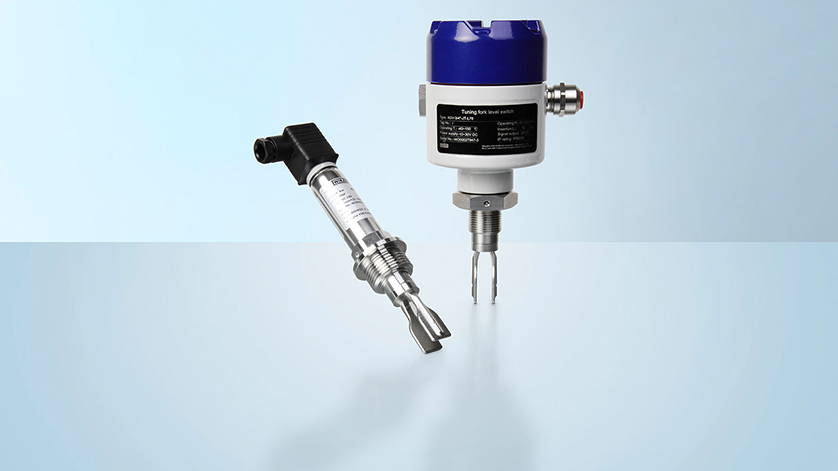
In the world of industrial process measurement, precise level measurements are of vital importance. Level limit switches play a crucial role here to ensure that liquids in a tank are optimally controlled and monitored. In this blog post, we will have a closer look at two types of level limit switches: the trusted float switches and the innovative vibrating level switches (available at WIKA from January 2024).
Two types of level limit switches
-

Float switch: a trusted all-rounder
Float switches are considered precise measuring instruments for fill levels of liquids. Their area of application covers a wide range of industries. In particular, they are known for their accuracy, resistance to foam and viscosity of the medium and for being cost-effective and maintenance-free. A major advantage of float switches is the possibility to integrate up to four switch points in one single instrument. This flexibility makes them an ideal solution for complex applications in which multiple monitoring points are required. Additionally, even temperature probes such as Pt100 can be housed inside the guide tube of the float switch to simultaneously measure the process temperature.
-

Vibrating level switch: Compact limit level detection in every position
Vibrating level switches offer a compact design that is especially suited for the monitoring of limit levels inside pipelines. An outstanding benefit is the independence from the mounting position. This facilitates their installation and adjustment to different applications. Vibrating level switches are particularly popular for the dry-run monitoring of pumps as they can be easily integrated into different systems due to their compact size and versatility.
Conclusion – Use of level limit switches
By introducing vibrating level switches, the world of level measurement at WIKA has become even more versatile – especially when it comes to level limit switches. Float switches, however, remain a trusted and accurate option for applications requiring a precise monitoring and control of liquids. Vibrating level switches will primarily be used in the field of pipeline monitoring.
Note
Further information on our float switches or our vibrating level switches TLS-S, TLS-C and TLS-H can be found on the WIKA website. If you have any questions, your contact will gladly help you.
Also read our posts
What do dead bands mean with a float switch?
Float switch: What is it and how does it actually work?
Interface measurement with two floats

